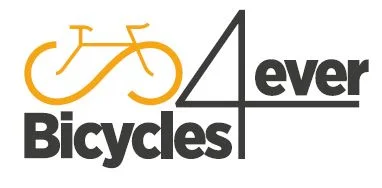5 Most Hated Cycling Products | Bike Fitters Worst Nightmare with Road Cycling Academy
Source: Road Cycling Academy Youtube Channel: 5 Most Hated Cycling Products | Bike Fitters Worst Nightmare
Video 5 Most Hated Cycling Products | Bike Fitters Worst Nightmare with Road Cycling Academy
Video 5 Most Hated Cycling Products | Bike Fitters Worst Nightmare with Road Cycling Academy YouTube Channel.
5 Most Hated Cycling Products | Bike Fitters Worst Nightmare
The Road Cycling Academy: Navigating the Frustrations of Bike Components
Cycling, as an activity and a sport, has gained immense popularity all over the world. With its growing popularity, there is also a wide range of bike components and accessories flooding the market. However, not all of them are well-designed or user-friendly, leaving cyclists feeling frustrated. In this article, we will delve into some of the most hated bike components in the cycling community and explore why they are so despised.
The 3T Ionic Seat Post Nightmare
One of the components that have left cyclists pulling their hair out is the 3T Ionic seat post. This seat post came with a saddle clamping system that involved counter-rotating splined aluminum inserts. These inserts had a staggering number of notches (36 and 37, to be exact) at specific intervals, complicating the process of adjusting the saddle angle. Cyclists found themselves spending an exorbitant amount of time just trying to get the angle right. The frustration with this seat post is so intense that even after extensive experience with it, adjustments still take an unreasonable amount of time.
The Inefficiency of Saddle Clamp Systems
Many saddle clamp systems that incorporate a through bolt or sliding bolts from the side have been a point of contention for cyclists. These designs aim to prevent the seat from slipping up or down, but in reality, they only serve to make the adjustment process unnecessarily difficult. The Factor Ostro, a bike that features a single through bolt clamp, and the Canyon SpeedMax, with its rear bolt clamping from the sides, are prime examples of this flawed design. Cyclists have noted that these systems constantly slip and create unnecessary challenges when trying to adjust the saddle angle.
Pedal Systems in Need of Adaptability
Pedals are an essential component for any cyclist, and the lack of options for Q-factor adjustment has been a significant source of frustration. The Q-factor determines the distance between the cyclist’s feet, and while Shimano offers a single Q-factor adjustment, it is often insufficient. This lack of adaptability puts cyclists, particularly larger riders or those with specific biomechanical needs, in a compromised position. The absence of pedal systems with wider spindles or shorter spindles has pushed cyclists towards aftermarket solutions that should ideally be readily available from major manufacturers.
The Cleat Conundrum: Shoes with Poor Cleat Translation
Shoes with poor rearward translation of the cleat have been a consistent headache for cyclists. Many mainstream shoe manufacturers position their bolt locations too far forward, making it virtually impossible to place the cleat where it needs to be for optimal foot stability. While some brands, such as Shimano and Specialized, have started introducing systems to address this issue, there are still a significant number of shoes on the market that lack this crucial feature. This lack of cleat adaptability often results in cyclists having to resort to aftermarket modifications, adding unnecessary complexity to the fitting process.
The Blind Drive Side Axle System
A particular bike design that has irked many bike fitters and cycling enthusiasts is the BMC SLR01, which features a blind drive side axle system. While aesthetically pleasing from the right-hand side, this design poses a substantial problem for those using wheel-on trainers. The blind drive side axle system prevents the bike from being mounted on such trainers, forcing users to devise alternative methods. This limitation has left many scratching their heads and feeling frustrated with the lack of consideration for practicality and functionality.
Seeking Solutions in Frustration
These frustrations are not just petty grievances; they reflect a need for innovation and adaptability in the cycling industry. Cyclists and bike fitters are demanding more user-friendly and versatile designs that cater to a wide range of needs and preferences. As the cycling community continues to grow, it is imperative that manufacturers take heed of these frustrations and work towards creating components and accessories that are both aesthetically pleasing and functionally efficient.
In Conclusion
The Road Cycling Academy explores the essential but often overlooked realm of bike components and accessories. With a keen focus on user experience and practicality, this article sheds light on the source of frustration within the cycling community. It is evident that the industry is at a critical juncture where it must address these concerns and strive towards creating solutions that enhance the cycling experience for enthusiasts of all levels. It is essential for manufacturers to listen to the voice of the cycling community and work towards creating components that are a delight to use rather than a source of frustration.
The opinions expressed in this space are the sole responsibility of the YouTube Channel Road Cycling Academy and do not necessarily represent the views of CicloNews.

